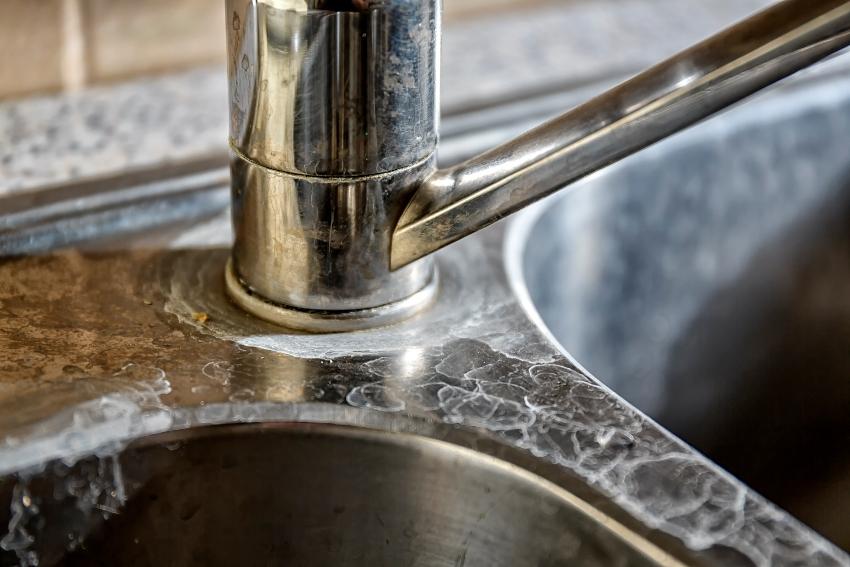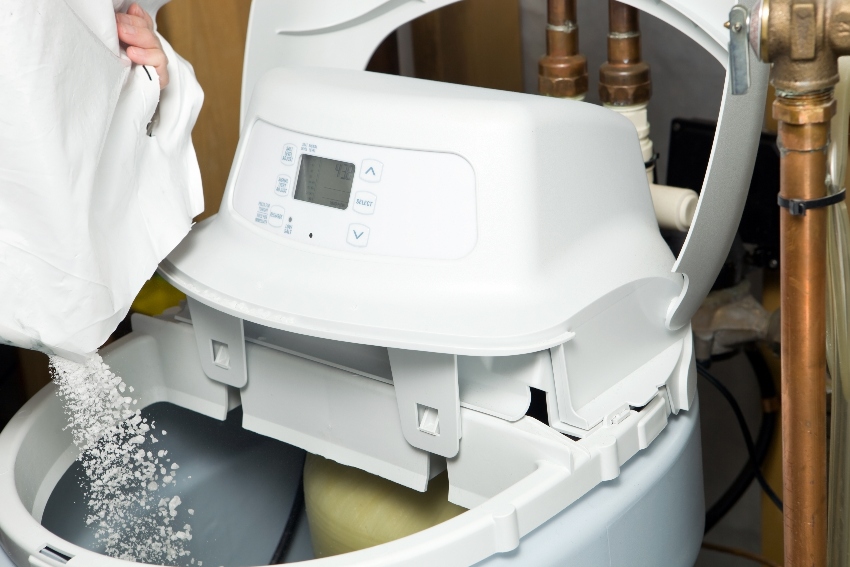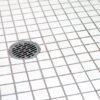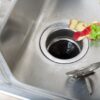Category: Water Softeners & Iron Filters

What is Hard Water? And Other Water Softener FAQs
You may have heard that water softeners help alleviate “hard water” problems, but do you know what they are and why that’s important? If not, don’t worry. We’ve answered some water softener FAQs to help. Read on to learn more.
What Is Hard Water?
Water naturally contains some amount of minerals, like calcium and magnesium. However, if it contains too much of these minerals (typically above 7 grains per gallon or 120 mg/L), the water is considered “hard.” Water that has the appropriate levels is “soft.”
What Are the Warning Signs of Hard Water, and Why Is It Bad?
The higher levels of minerals can wreak havoc on your body, plumbing and home appliances, and more. Warning signs and issues associated with hard water include:
- White, chalky scale buildup (from the excess minerals) in pipes and appliances that decrease performance and lifespan
- Difficulty lathering and fully rinsing soap and shampoo, due to the excess minerals negatively reacting and reducing their cleaning effectiveness
- Dry, irritated skin and weak, brittle hair caused by residual soap and moisture-absorbing minerals left by hard water
- Faded and/or graying laundry caused by leftover mineral deposits
- Soap scum buildup and stains in sinks, bathtubs, and showers from residual soap and minerals
- Cloudy spots on dishes, as well as faucets and sinks, from residue left by calcium and magnesium
- Decreased or lack of water flow due to minerals building up and clogging pipes
- Poor performance of appliances from the increased wear of hard water on their components
If you notice any of these issues, you may be dealing with hard water. Call Robillard Plumbing to properly diagnose the issue and help select the ideal water softener for you.
What Kind of Maintenance Does a Water Softener Require?
Through an ion exchange process, water softeners use negatively charged softener salt (either potassium chloride or sodium chloride) to remove the positively charged magnesium and calcium minerals of hard water. Ensuring optimal performance requires some simple DIY maintenance:
- Follow manufacturer guidelines for maintaining proper salt levels to avoid issues caused by underfilling and overfilling.
- Break up bridge-like salt deposits to help ensure proper functionality.
- Clear sludge known as “salt mushing” from the bottom of the salt solution tank so it doesn’t clog the well.
- Clean the tank regularly (consult owner’s manual for recommended schedule) to prevent salt blockages and maintain softening performance.
For more details, visit our blog post outlining proper water softener maintenance.
What Type of Water Softener Should I Buy?
While water softeners are available in various shapes and sizes, the primary factor is the type of salt used for the ion exchange process:
- Sodium chloride softening salts tend to be more common due to the lower cost. However, they’re not ideal for individuals trying to reduce their sodium intake as they add small amounts to the water during the softening process.
- Potassium chloride softening salts are more expensive due to being more difficult to harvest. This “salt-free” option would be better for individuals with high blood pressure. It’s also the eco-friendly choice—the residual potassium in the wastewater is healthy for plants and flowers, unlike potentially harmful sodium.
While these water softener FAQs provide a solid baseline understanding, selecting the ideal size and system should be matched to your home and circumstances. Trust the master plumbers at Robillard to help you find the perfect choice and to provide professional installation.
Contact us to learn more and for all your plumbing service and product needs.
Read More
Maintaining Your Water Softener’s Performance
Unfortunately, your water softener doesn’t come with a check engine light when it’s time for a tune-up. The state of your water softener lies in your hands, but don’t worry, we have a cheat sheet. Continue reading our blog for water softener maintenance tips to keep your system in great shape.
Check Salt Levels
Correct salt levels will keep your water soft and your unit functioning well. The salt should fill up about half of the tank and be approximately three inches above the water level. For exact levels for your unit, refer to your water softener manual. A great rule of thumb for any new water softener owner is to check the levels once a week to familiarize yourself with the system’s salt usage.
Use the Correct Salt
It’s not a one stop shop when it comes to purchasing salt for your water softener. The salt options can leave you feeling flustered and uncertain. Contact the professionals at Robillard Plumbing if you have any questions about what type of salt your water softener needs.
Break up Salt Bridges
Salt can build bridge-like layers in your softener and keep the loose salt from mixing into the water. Luckily, this is an issue you can usually resolve on your own. Take a broom handle and break up the hardened salt or pour hot water over it to loosen the salt bridge.
Clean the Tank
Before cleaning out the tank, first shut off the bypass valve to prevent water intake. Then, empty the tank by dumping out or siphoning water. Next, mix dish soap with two gallons of water to scrub out the inside of your tank. Once your tank is rinsed and dried out, replace salt and water in the tank and then wait a few hours before turning on the bypass valve. Keeping your tank clean will ensure the water is being softened and salt blockages are not forming.
Clear out Salt Mushing
Although salt mushing sounds like a fictitious issue, it’s real. When salt dissolves and recrystallizes, it can form a layer of sludge at the bottom of the salt solution tank. The mush will eventually clog the well and cause major issues down the road. Regularly check the bottom of your tank and scoop out the sludge or break it up with a broom handle.
Don’t Overfill
Less is more when it comes to softener salt. Filling your tank with extra salt may sound like a time saver, but trust us, it will lead to trouble. Excessive salt will encourage salt bridges to form and prevent your water softener from functioning properly. Humidity can also make salt dissolve slightly and then bond the crystals together again, causing blockages. If salt stands in the same place for days, the pieces bond together and form a crust that will inhibit the salt on top of it to be used.
Routine water softener care will keep your unit in pristine shape for many years to come. Robillard Plumbing offers professional water softener installation and repairs, along with a full range of plumbing services and products. If any questions or concerns should arise, be sure to Contact Robillard Plumbing.
Read More


